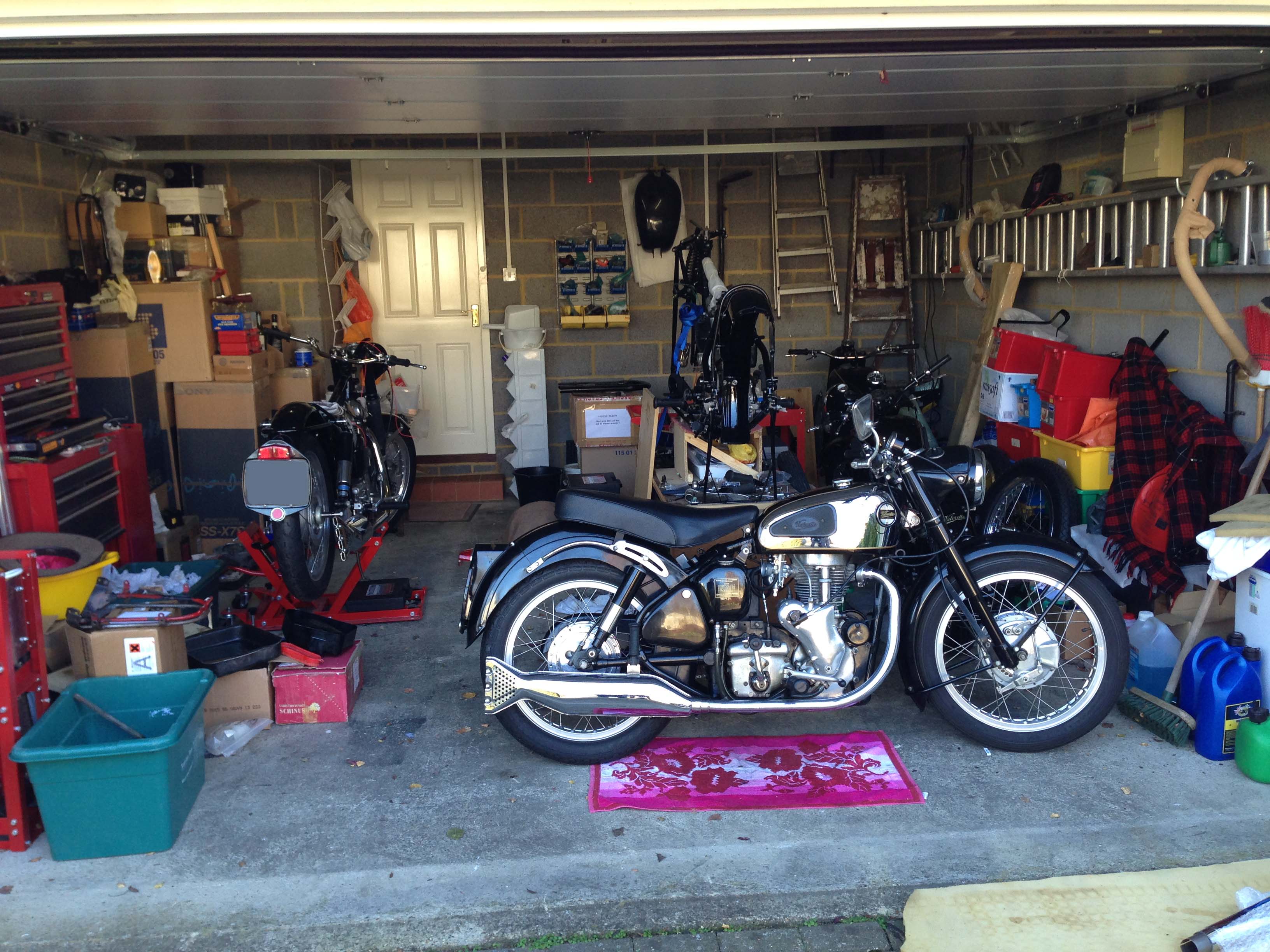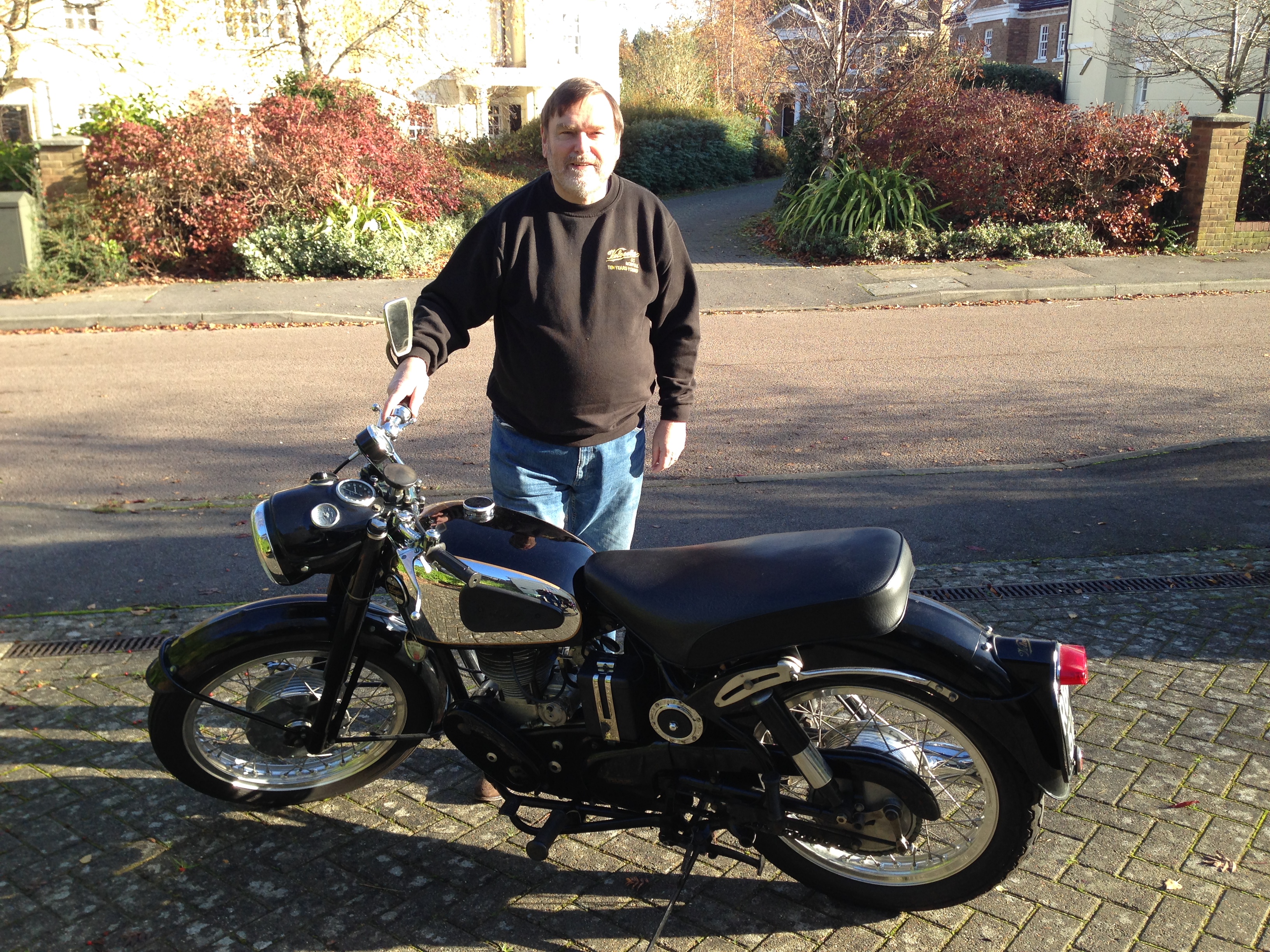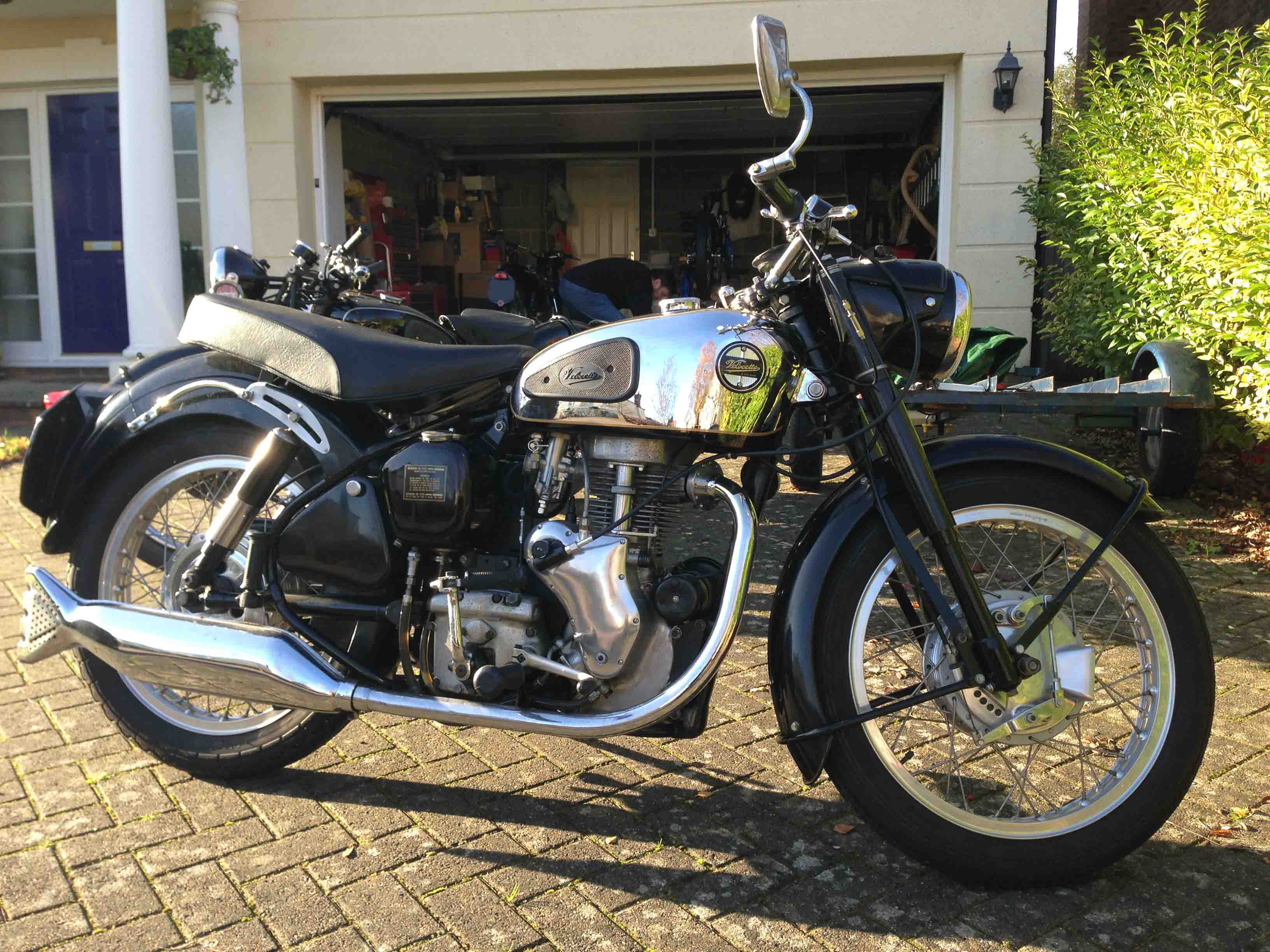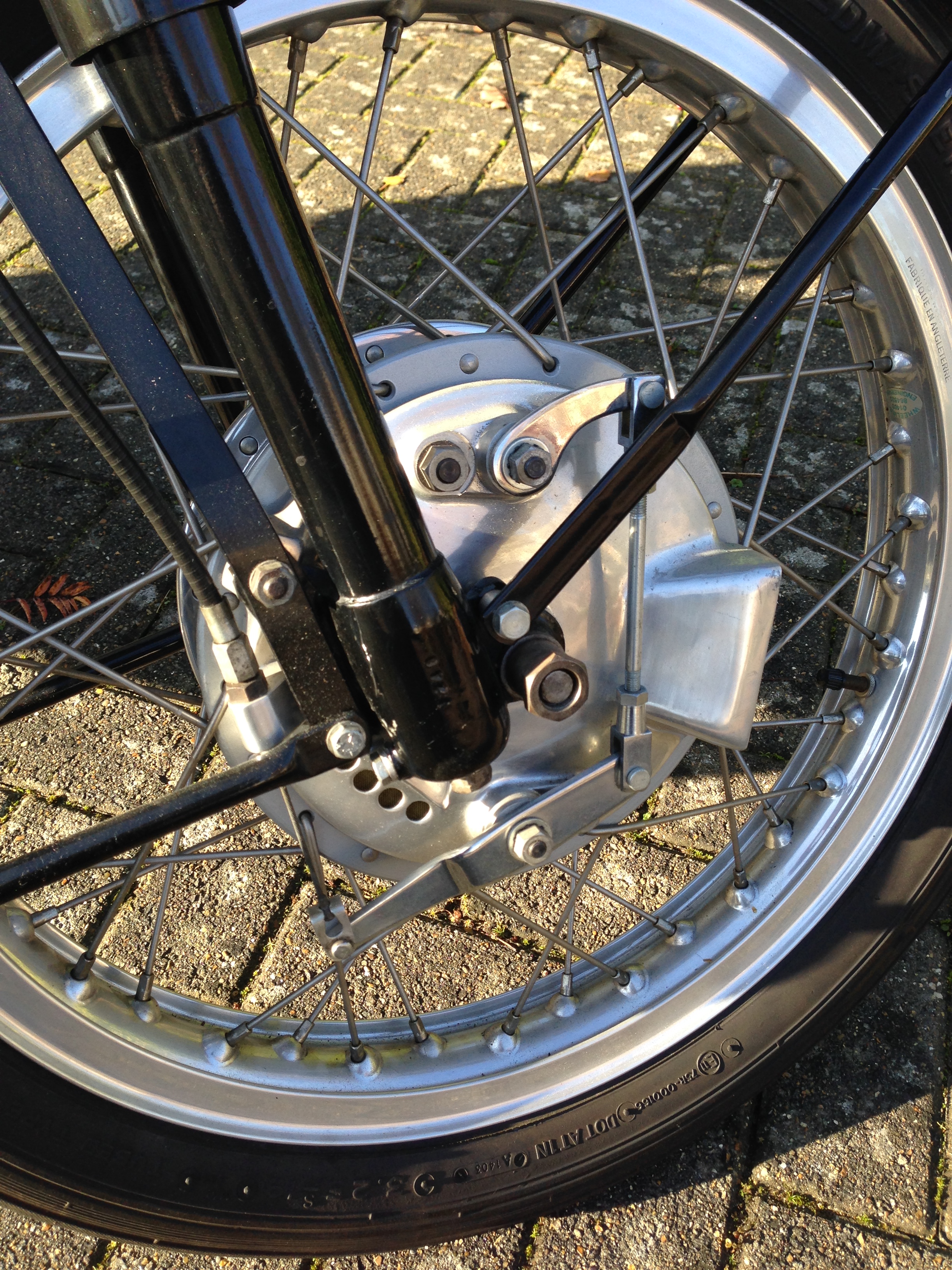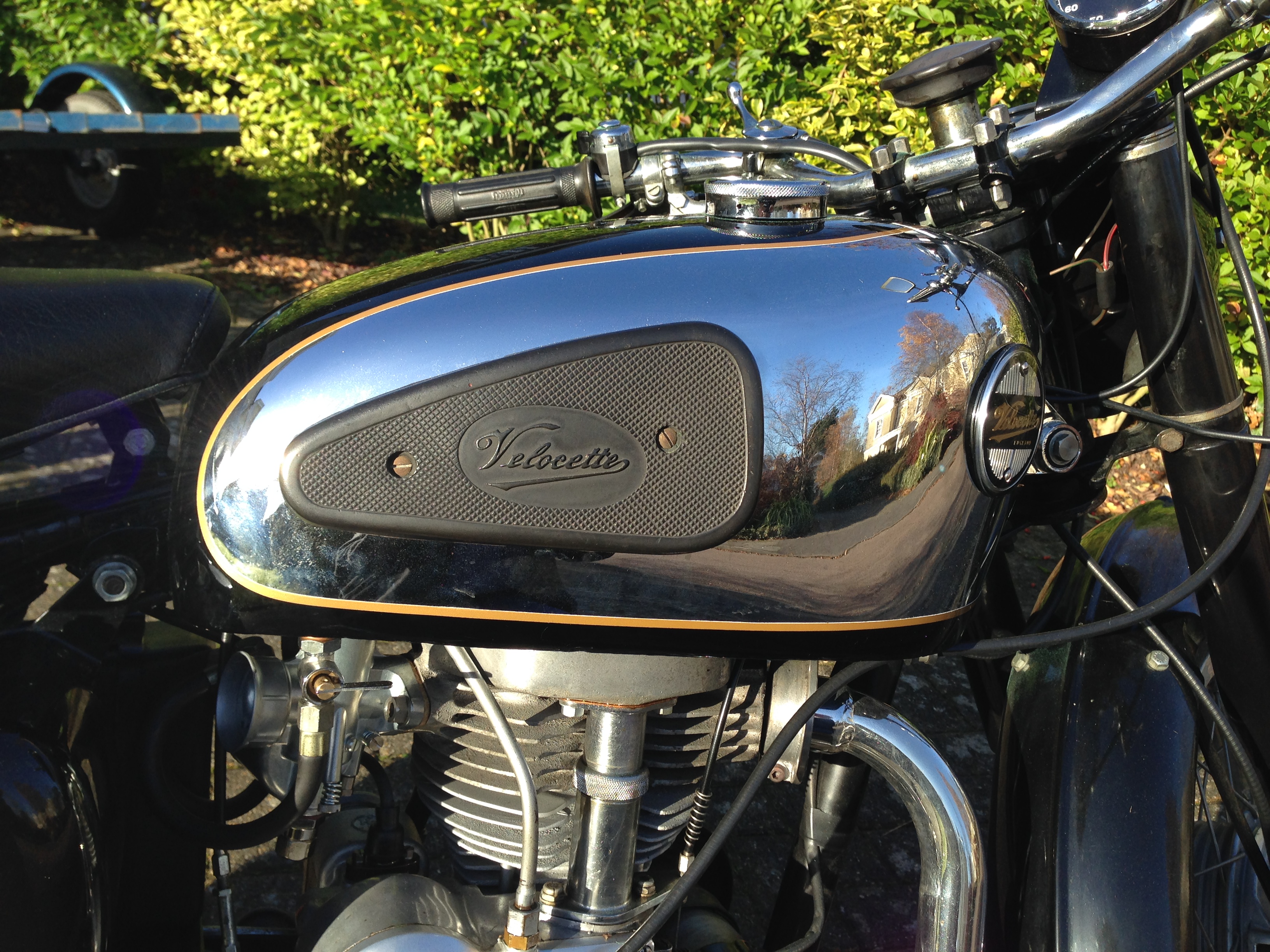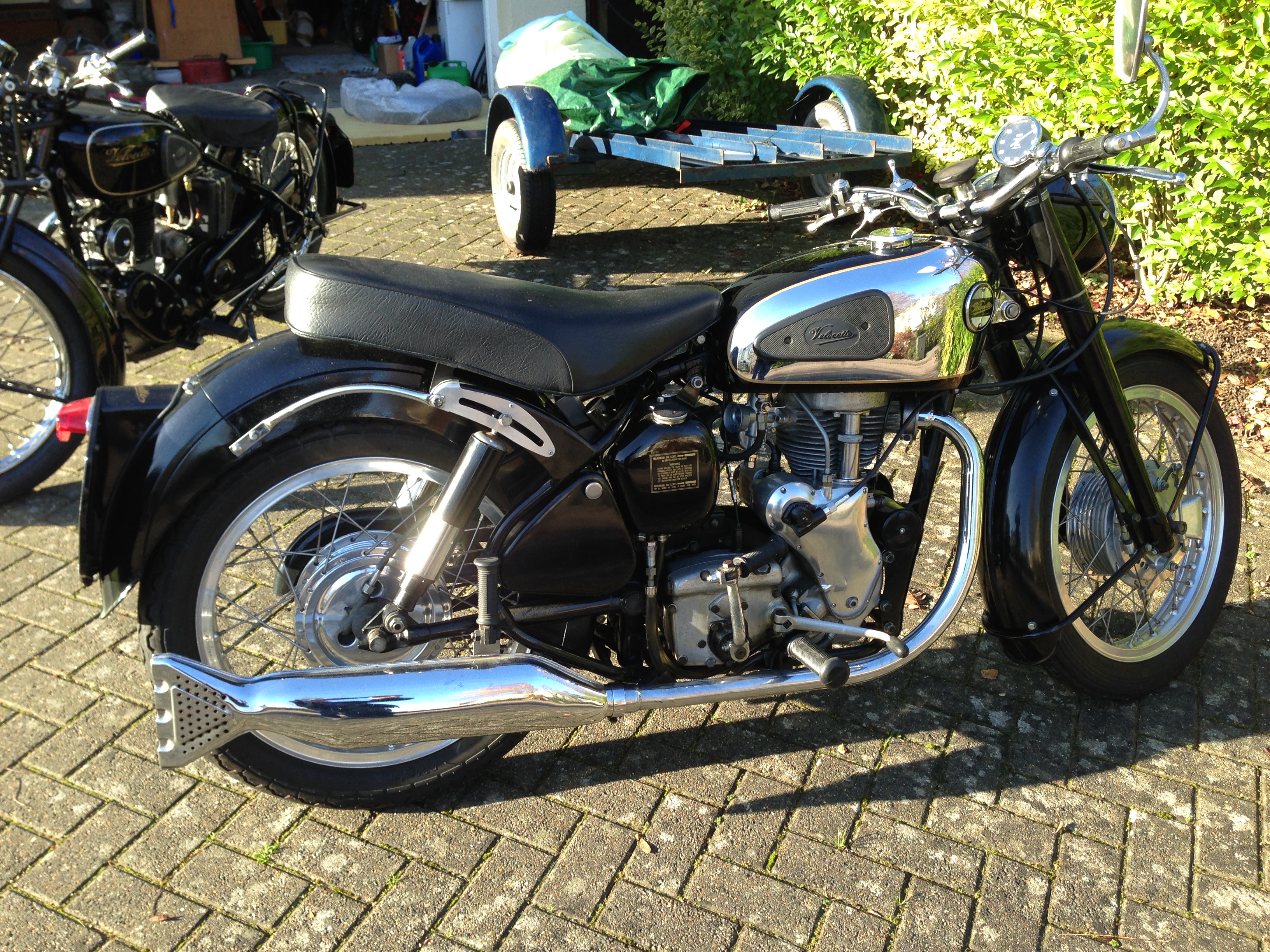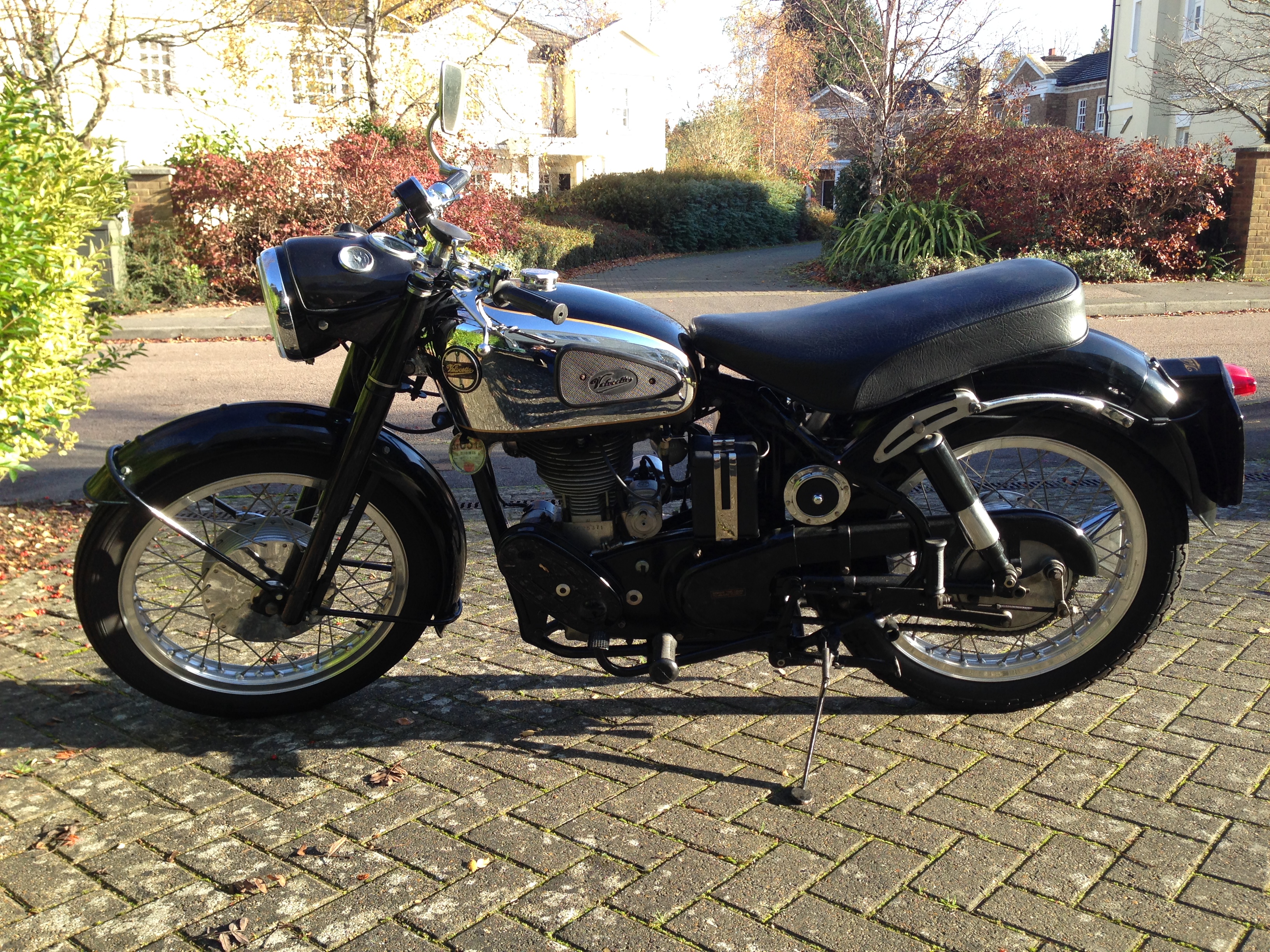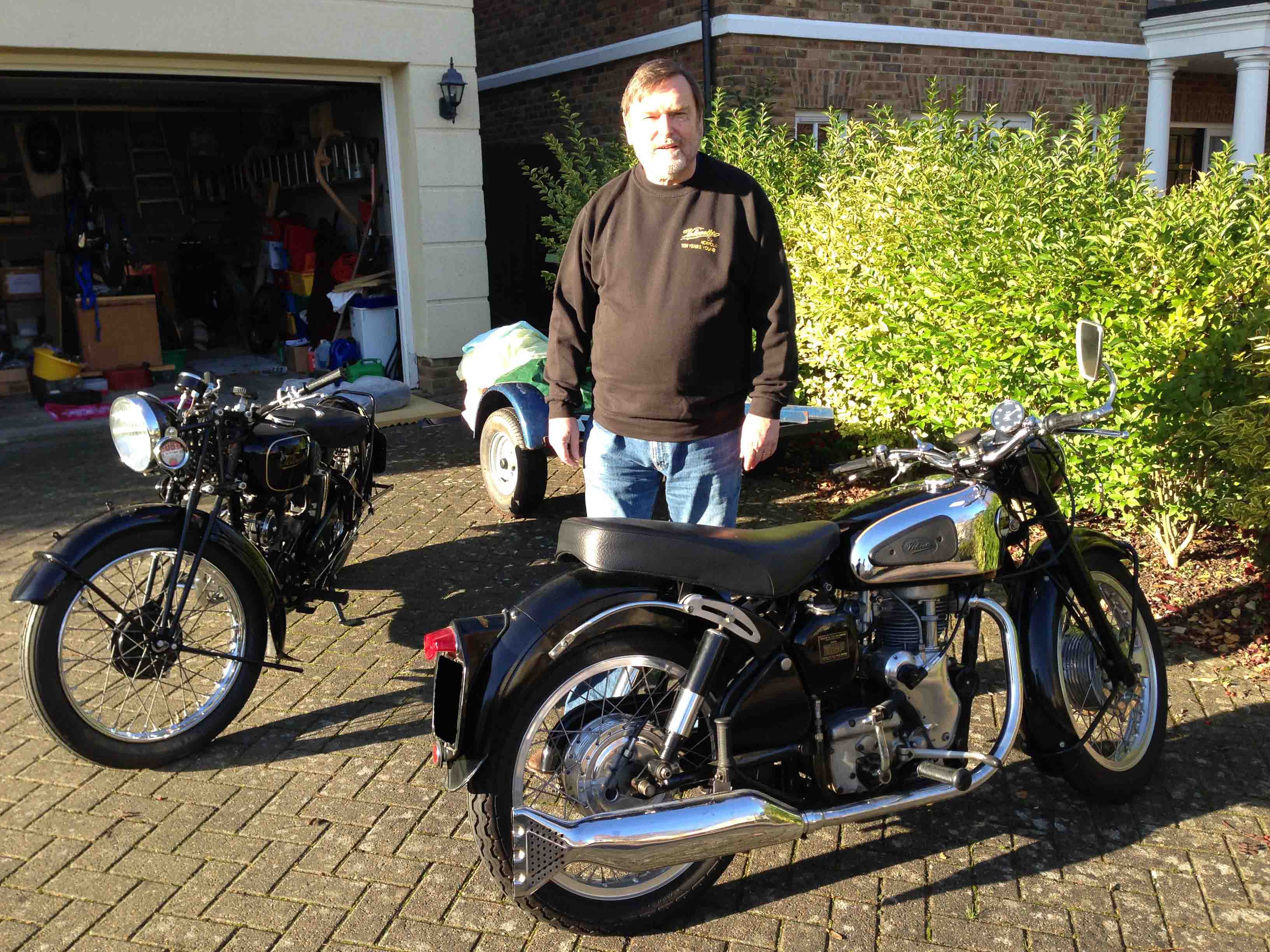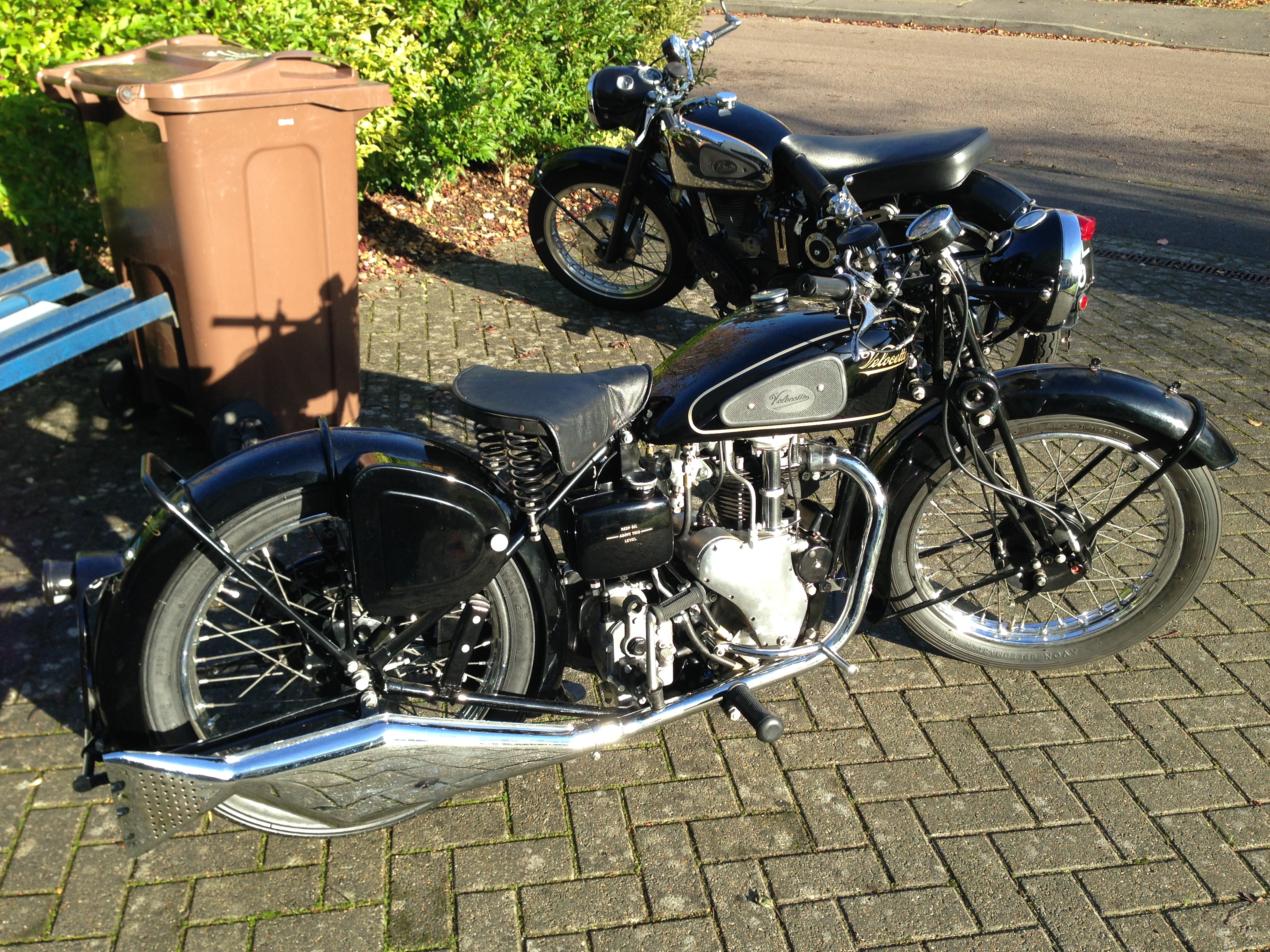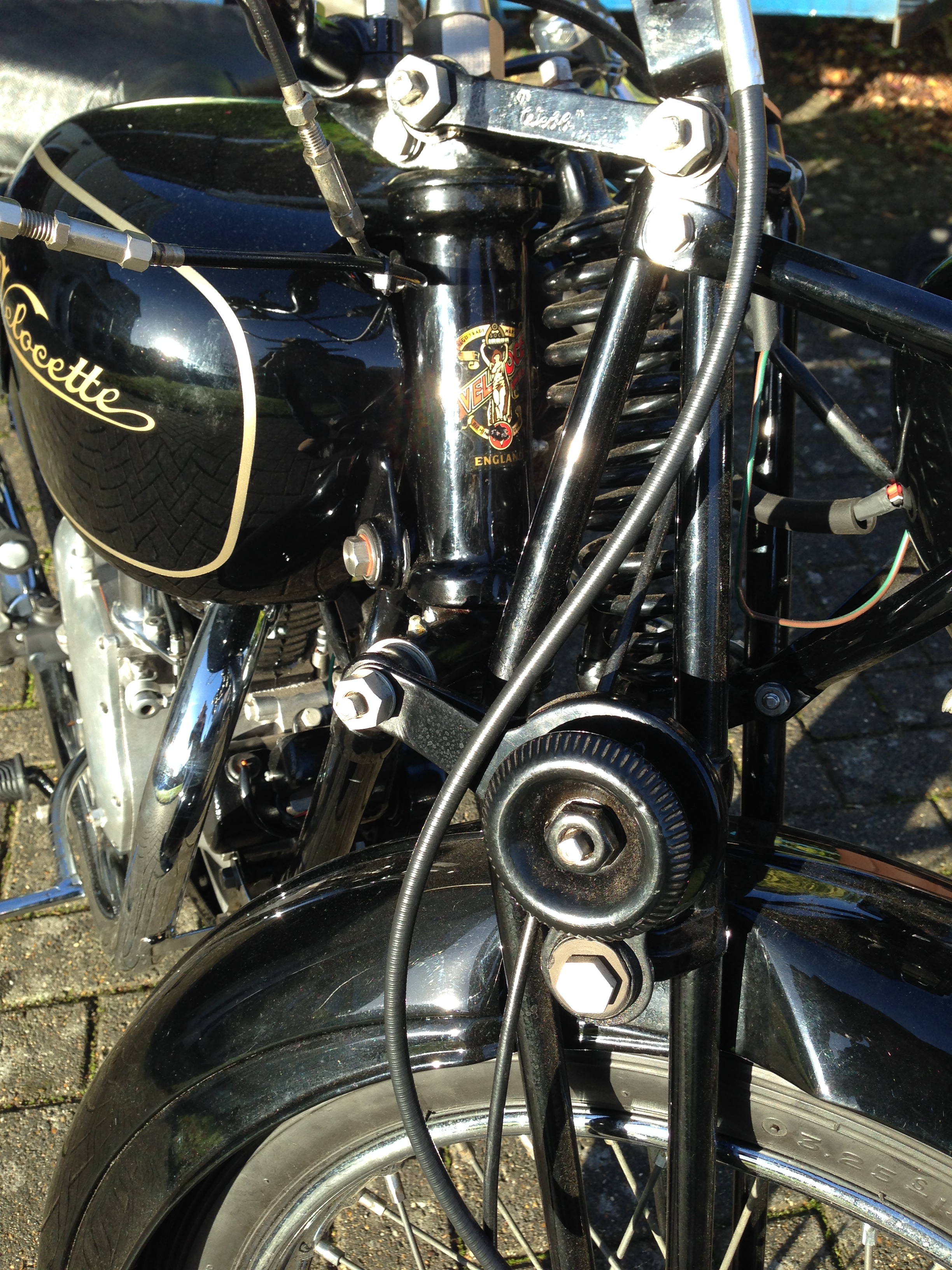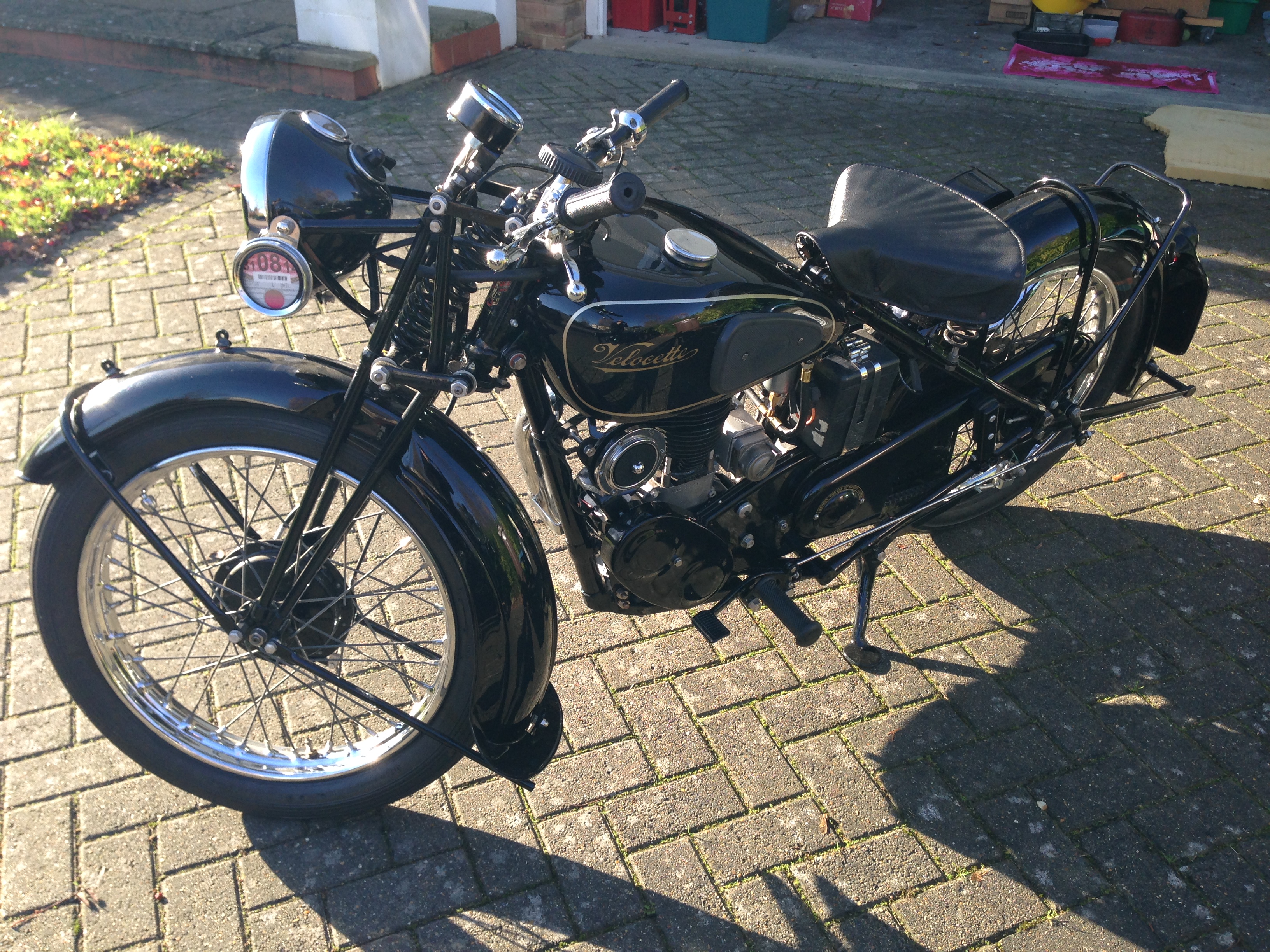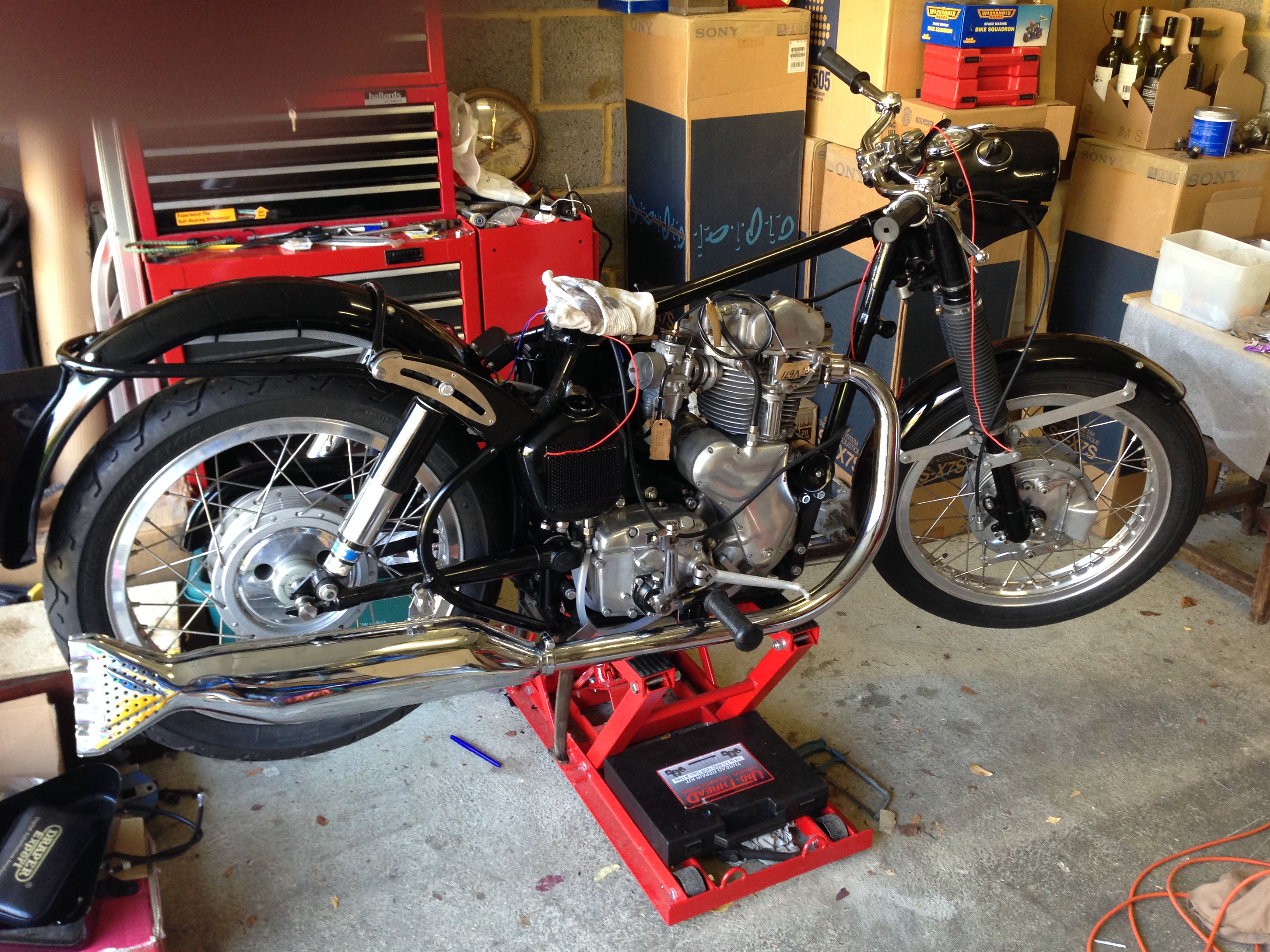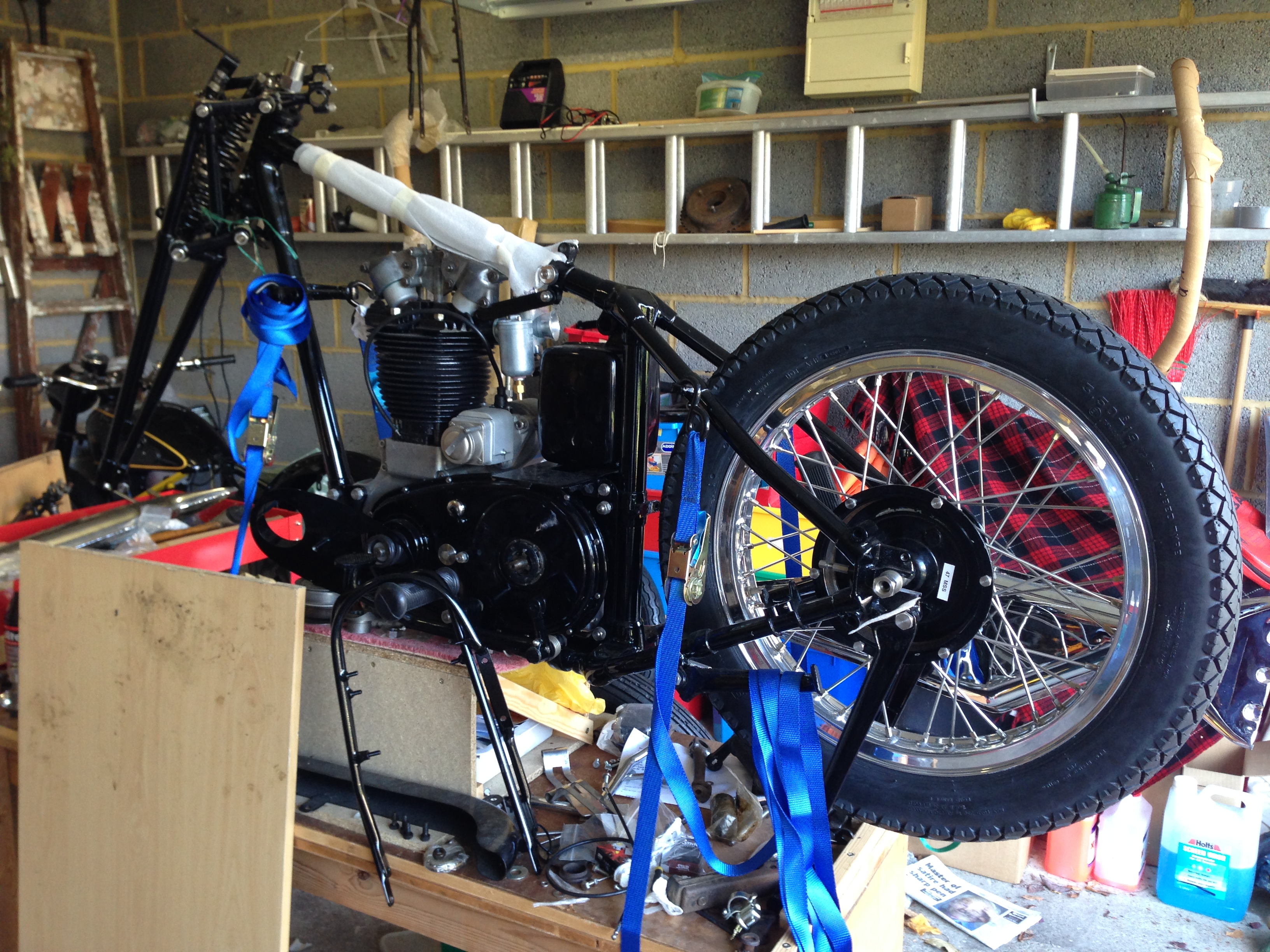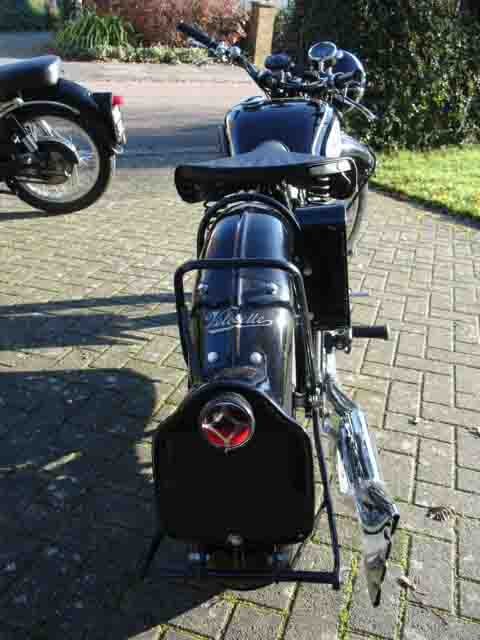Space-Poor play-room…
Well, I’ve been here in the UK 5 weeks now and not all has gone smoothly, not least of all the merry-go-round with the banks/licenses/ID etc. Since I have been out of the country since 1981 (!), there have been a few changes to things like Anti-Terrorism- and Anti-Money-Laundering-Legislation and -Requirements which have not made the return logistically a pleasant one. On top of that, my belongings and workshop etc. are still ‘all at sea’, and so I cannot actually ‘DO’ anything constructive… much! Some issues with a decently constant Internet connection and other small problems have also contributed to the general chaos!
I DID have (or made) the opportunity to pop over to see the Overseas Secretary of the VOC (Velocette), Wayne Coulthard, for a GREAT weekend, meet his lovely wife and have a ‘play’ in his garage – my fingers were veritably ‘itching’ to get my hands on a bike! – and enjoy a glass or two of red, fermented grape juice in the best of company! He is a ‘space poor’-sufferer at present and has his challenges when working on bikes in the winter, since he has to wheel things around to get at them, as can be seen in the pictures (kindly permitted to be made public!).
Wayne and a nice 1958 MAC! There were six built with the chrome tank and when Wayne bought it in 1970, it had been painted over; since he has had it, he has put the twin-leader on the front and the appropriate rear hub, the tacho and a TT carb… WERRY nice!!
Rigid 1946 MAC imported from Canada, a bitsa: Engine and gearbox from Toronto and frame from Michigan. Spot the (wrong) timing cover, while the real one is being modified!!
An interesting 1967 ‘bitsa’, built in an originally blue and new venom frame, this one originally built as a fast sidecar rig with rear-sets, ace bars and a tuned MSS engine (though original gearbox ratios). It has been beckwards and forwards to Ralph Seymour’s, who blueprinted the engine for Wayne in 1990. Built as a fast tourer with the original big tank with Velocette script transfer correct for the year… Tasty! Nice clean lower-CR ‘Clubmans-MSS’
A ‘fully’ original MSS in preparation… This time a 1947, from Ontario! Just about to get the (original, of course!) rear-mudguard fitted, YAY!
…and a good bitch!
Wayne has a number of ‘projects’ nearing completion above with the unfortunately now common and very niggling issues that we never had 20, 30 years ago… I wonder what happened to going to yer friendly-neighbourhood, even generic, bike shop for a brake or carburettor cable (and if it just happened to be Ted Bloomfield’s place in Leytonstone -God rest his soul!-, for a few lewd insults thrown in for free!), take it home and just fit it!
Ask almost ANYONE now, and none of them can guarantee that it actually fits! NONE of them! Most can’t even begin to give an answer. Why is it that then, whether it was a Velocette, BSA, Enfield, Matchless or Triumph ‘dealer’, the OEM or Wassel or whatever cable fit any bike with that carbie or whatever? Wassel and AMAL and some of the others are still there in NAME, but what happened to the cables? Surely they haven’t had to change in all those years? Wasn’t that one of the attractions of the British bikes of the era? For more than 20 years at a time, each marque or model-range all shared the same bits mostly from top to bottom, which could be obtained anywhere, which would fit first time and were relatively inexpensive.
So what happened? Have AMAL now changed the carburettors (retrospectively as well! – THAT’s clever!) all to have individual measurements for their throttle and choke cables?? It would seem so… I don’t think that I am the only one that has to buy five cables to make one fit, then take it off again and modify all the others to work, so that a proper spare can be carried with confidence in the spares-pocket/wrap or toolbox?? The prospect of replacing a broken cable in the middle of nowhere at night in the rain, with one that needs an hour and special tools to fit is sheer madness!
This process has to be carried out for 90% of ALL spare parts or replacements these days. WHY? Why did they fit THEN, and almost definitely do not NOW? Have the bikes changed? Grown up, for example? An interesting thought!
No, I think that the problem lies elsewhere and to an extent with the ‘users’, or sadly what most have become the ‘collectors’ of bikes that have been ‘restored to death’ with nary an intention to ever run them ever again, and if so, only on a trailer to the next meet, fire it up once and then trailer it back home again into the safety of the heated underground garage or mantlepiece in the lounge!
Yes, I have recently avidly read and taken advice from “How to Make Friends and Influence People”.
Problem number one probably started many years ago when tin-ware, as an example, began being made for general consumption by ‘other than original manufacturers’ for specific models of specific marques. Generic mudguards and such had always been around, and all the dealers and distributors stocked them a s sporty and otherwise less expensive alternatives to original tin, that was often discarded for the lighter ‘pattern’ or generic items. Of course it was understood that these would have to be individually fitted. So, holes had to be drilled IN THE PATTERN PARTS and brackets (if supplied) or had to be made as well. The real problem starts to creep in when years down the track, replacements (or a return to the original are sought and the bike itself or mountings have, unbeknown to the present owner, been modified by the past owner… then ‘diversity sets in and ostensibly ‘original’ parts, then have to be modified to fit the now ‘unoriginal’ bike… Chaos soon reigns as almost every bike then takes on its own character and is modified with each ‘new’ addition.
After a while, of course, everyone has so become used to having to modify everything to fit, that nobody (least of all the manufacturers of new replacements, ahas any idea what is original anymore… or even cares! Then we have BIG problem number three: ‘WE’ order a part from “Earwig’s Vintage Parts Emporium” and it sits on a shelf for two years before even being attempted to fit to the bike (or car or whatever), by which time, when we complain that it doesn’t fit, either Earwig’s has gone broke, changed their name, been bought up by some multinational concern, or has changed suppliers and, you know what? Couldn’t give a damn, either! And why should they anymore??
There are, of course, quite other problems that have crept in… How many parts out there that are nothing like their originals, but are now just marketed as replacements, because in the meantime, no-one is around that actually is quite sure that they are NOT? (at least not anyone with a loud enough voice!)
Even worse are the parts that have been made to repair or replace and fit the PATTERN parts that in the meantime have been fitted, and no longer will fit the ORIGINAL parts!! I had this question to face when I made the ‘Star’ insert! I could make it to fit the ‘available’ pattern Miller lights, but they might well have not fitted the originals…. A ‘no-brainer’ in modern English, as I would rather have to have them being modified to fit the pattern parts, than to find that there was no way to fit them to the originals, savvy?
So we put up with buying a cable and having to modify it to fit (which the dealer never finds out about and can’t (even if they DID even want to) pass the information on to their supplier, who will not bother to do anything either, because idiots like us will continue to buy their incorrect crap for eternity anyway! The dealer can’t change supplier anyway, because they know that there is only one manufacturer anyway, where X, Y and Z all buy from!
Well, what has to be done or indeed CAN be done about it? Are YOU prepared to buy whatever is there, just because you are led to believe that it is all that is available, or that there is nothing that YOU can do about it? WHY, for example, can mudguard not be made that fit and have holes in the right place? The FRAMES were all the same for a Rigid MSS (or even a MkII KSS), the same goes for the MAC/MOV bikes, for example… OK, so Tanks can be a bit of a problem on the swingarm bikes where lugs get chopped off and relocated by their owners to fit larger or smaller items, but even then, there were only a few different possibilities (for the frames, anyway – quite a different story is the diversity of tanks, for example! Wayne is the tank-fetishist, He can tell you how many different tanks were produced for each mode…I have lost count! Since I only really know my way about the Rigid MSS/KSS/KTS stuff in that respect, I have restricted myself to a small number to cope with!
So, what goes into a bike actually? It can’t be THAT difficult to make the ‘right’ stuff, can it?
Despite many years of manufacture, 3rd-Party products were limited mostly to carburetion, lighting and associated electrical items like switches, some ignition parts and things like twist-grips, levers and some tools – and tyres and rims, of course!
Veloce produced all their tinware in house, frames, engines and gearboxes. Where engine-plates came from is immaterial as they were easy enough to get right for each model. OK, Bluemels made brakes, Webb & Dowty made earlier forks and Veloce made their own after around 1950. There is a certain confusion that can be had for free regarding various differences in clutch parts, but most of the rest was not difficult, as the parts all came from known sources, distributed exclusively by the factory!
Over the entire time after the war, there were only four types of carburettor ever fitted to 99% of British bikes over 250cc: The 276, monoblock, TT and concentric (I don’t think that GP were ever fitted as an option to road-bikes? OK, so different choke-sizes and sometimes float-chamber setups, but what the heck, the throttle-cables and choke-cables were all the same for each type, or not? One for single carbie and single-pull throttles, one for twin-pull throttle setups and twin carbies and one for single-pull throttle and junction-box for multiple carbs. EASY! ALL throttle and twist-grips had the same dimensions for cable ends (well, 90% did…) and the only exception is probably the Veloce push-me-pull-you setup designed before the war for the use on hand-change bikes…
I don’t understand why they can’t be made to fit! For each required LENGTH of cable overall (and there can’t be TOO many differences there, either) the ‘free ends’ must surely always be the same, whether there is an adjustor in the middle or not, or am I missing something here?
Clutch and brake-cables are another story, of course, and have to be matched to brake hub levers and handlebar levers with and without fitted adjusters etc. individually… but even here, a 1969 Bonnie or a 1955 MSS would have had the same cables fitted for that model, probably for years on end. Given a known front-brake and handlebar combination of a given make and model of bike, a cable should here also be ‘standard’ or at least possible to ascertain easily.
Admittedly, if you want to put a Brembo four-leader on your LE, you will have to make your own cables and most of the rest of the bike, too!
How many Speedometer-cable-end dimensions were there at the drive end? WHY are some too THICK to push into the drive? Come on guys, it’s not THAT hard, is it? And how does this stuff get into the marketplace?
Because WE are too apathetic to DO anything about it and the dealers couldn’t give a toss and can’t be bothered to try anything out (against what?), even if they DO know that they don’t fit: most of them won’t even send them back, either ,and they just get replaced into stock for the next tosser to buy! YAY!!
If we are clever, we mark the parts before we send them back (with flourescent marker, for example…). When was the last time that YOU received the original part that you returned again, after three other returns of the same part that didn’t fit from the same dealer? Would you know if that happened? I would and it has happened, believe me!
I rest my case…
I wonder where he got that nice-looking star from on the rear light?? 🙂 🙂
© peter gouws 2013
